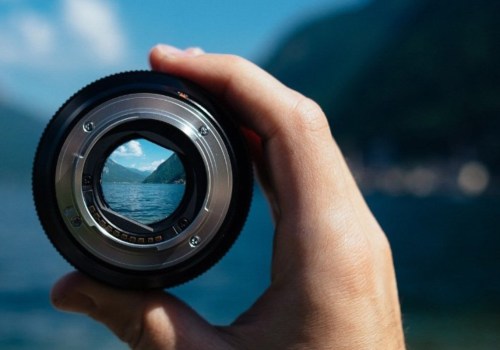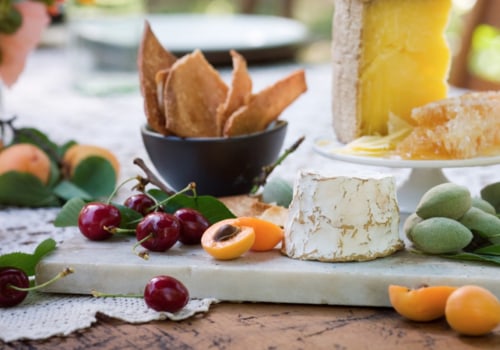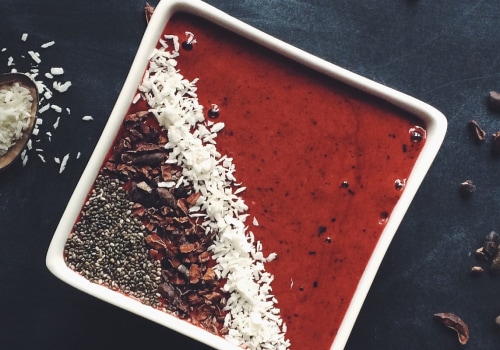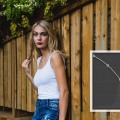Are you looking for creative ways to capture stunning shots? Long exposure shots with natural light can help you do just that. This type of photography is a great way to bring out the beauty of your subject and create artistic images. From capturing the stars in the night sky to creating gorgeous landscapes, long exposure shots with natural light can be used to achieve stunning results. In this article, we'll explore the techniques and tips you need to know to capture perfect long exposure shots with natural light.
Practice Makes Perfect
Taking long exposure shots with natural light requires a great deal of practice and experimentation to achieve the best results.While the basics of shutter speed, aperture and ISO are important to understand, it's essential to take the time to practice with different combinations of these settings and experiment with different compositions in order to find the perfect shot. Different lighting conditions can produce drastically different results, and it's important to explore the effects of changing the shutter speed, aperture and ISO settings in different scenarios. Experimenting with different angles and perspectives can also create unique and interesting effects. It's best to take as many shots as possible to get a feel for the effects of different settings and compositions.
Having an understanding of the basics of photography is important, but it's also essential to be creative and explore different techniques. Having an open mind and experimenting with different settings can lead to some amazing shots.
Composing Your Shot
When shooting long exposure shots with natural light, composition is essential for producing stunning results. To create a beautiful and ethereal effect, you will need to make the most of the natural light and use leading lines and perspective to add depth and interest to your shot. Leading lines are visual paths that help guide viewers’ eyes through a frame.This can be achieved by using diagonal or curved lines, repeating shapes, and strong contrast. When used correctly, leading lines can draw attention to a particular area of the shot and give it more depth. Perspective is also important when composing a shot. By placing objects in the foreground or background, you can give your shot more depth and create a sense of scale.
Additionally, you should consider how much of the frame should be in focus. If you want to focus on a particular area, you should use a shallow depth of field. If you want to capture the entire scene, you should use a deep depth of field. Using leading lines and perspective to compose your shots will help you capture stunning images with natural light. By making the most of the natural light and adjusting the settings accordingly, you can create ethereal and beautiful shots.
Setting Up Your Camera and Equipment
When it comes to long exposure photography, the most important settings to consider are shutter speed, ISO, aperture, and lens.Shutter speed determines how long the camera’s shutter will remain open, allowing light to pass through the lens and reach the sensor. A longer shutter speed allows for more light to enter the camera, creating a longer exposure. For long exposure shots with natural light, it’s best to choose a shutter speed of 1 second or longer. ISO is the camera sensor’s sensitivity to light.
A higher ISO setting will produce a brighter image, but can also introduce noise or grain into the shot. For long exposure shots with natural light, it’s best to keep the ISO setting as low as possible. Aperture is the size of the lens opening that allows light to pass through. A larger aperture will allow more light to enter the camera, producing a brighter image.
For long exposure shots, you should use a small aperture (like f/16 or f/22) to ensure that the entire scene is in focus and that there are no overexposed areas in your shot. Finally, the type of lens you choose can have a big impact on your shot. Wide-angle lenses allow you to capture a wider field of view and more of the scene in your shot. Telephoto lenses are good for capturing details from far away and isolating specific elements in your shot.
Choosing the Best Natural Light
Choosing the best natural light for your long exposure shot can be the difference between a stunning photograph and an average one. Shooting at sunrise or sunset is often the best choice for long exposure photography as the sun is low in the sky, creating a soft, diffused light. When shooting at these times, it is important to remember to use a tripod, as long exposures need to be taken with great stability to avoid blurring. Additionally, you can take advantage of the warm colors of the sunrise or sunset, adding another layer of interest to your photograph. The time of day will also affect the direction of the light.During a sunrise or sunset, the sun will be low in the sky, casting a soft light on your subject. This type of light is ideal for long exposure photography as it allows you to capture detail without harsh shadows. Shooting in the middle of the day, when the sun is higher in the sky, will result in harsher shadows and more contrast. This can be used creatively in certain shots, but generally it is better avoided for long exposure shots. Another factor to consider when choosing the best natural light for your shot is the weather.
Cloudy days can be great for long exposure shots because they provide even lighting and avoid harsh shadows. On sunny days, however, it is important to be mindful of where the sun is and how it will affect your shot. You may need to adjust your position or framing to avoid bright spots or harsh shadows. Finally, it is important to choose a location that will provide interesting light. Shooting near bodies of water or reflective surfaces can add a unique quality to your shot.
Trees and other natural elements can also create interesting shadows and add depth to your photograph. In conclusion, choosing the best natural light for your long exposure shot is an important part of capturing stunning photographs. Shooting at sunrise or sunset is often the best choice as it provides a soft, diffused light. Additionally, be mindful of weather conditions and choose a location that will provide interesting light. Long exposure photography using natural light is an art form that can produce breathtaking results with the right combination of light and equipment. Setting up your camera correctly, choosing the best natural light source, and composing your shot carefully are all essential elements to creating stunning long exposure shots.
With some practice, you will be able to capture beautiful photos with an ethereal quality. By taking the time to understand the fundamentals of shooting long exposure shots with natural light, you can create stunning images that will stand out from the crowd. With the right setup and composition, you can capture stunning images that will be cherished for years to come.








Leave a Comment